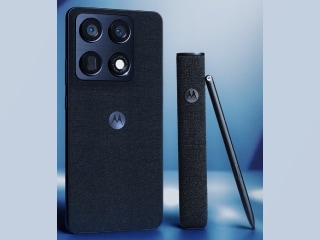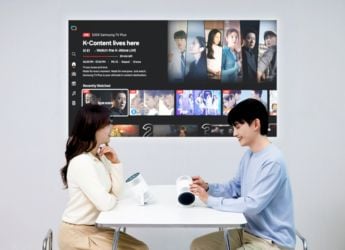- Home
- Wearables
- Wearables Features
- CES 2020: Dressed to Connect Wearable Tech Expands All Over the Body
CES 2020: Dressed to Connect - Wearable Tech Expands All Over the Body
CES 2020 had some of the very latest innovations in the burgeoning wearable tech sector.

Photo Credit: Ellcie Healthy
Smart glasses at CES sought to offer solutions to a variety of problems.
From tiredness-detecting driving glasses to shin guards that judge the performance of footballers -- we've come a long way since the early days of the pulse-measuring smart watch.
Some of the very latest innovations in the burgeoning wearable tech sector were on display this week at the 2020 Consumer Electronics Show -- offering improved ways to get online and keep on top of health issues.
The eyes have it
Smart glasses at CES sought to offer solutions to a variety of problems.
French startup Ellcie Healthy displayed its optical frames offering drowsiness alerts for drivers, and can also help detect falls in elderly people.
"This product can help save lives and reduce accidents," said business manager Theo Niktabe of the glasses which have been sold in France and are being launched worldwide.
The drowsiness alerts may be useful for truck drivers and the discreet design -- they look like normal eyewear -- may get more elderly people to use them.
"We try to make smart glasses that don't look like smart glasses," Niktabe said. "Old people don't want to wear devices for fall detection."
A different kind of smart eyewear from US startup Narbis uses neurofeedback for brain exercises which can help boost concentration, notably for children with attention deficit disorders.
Using a NASA-developed algorithm, the glasses become tinted when the wearer is distracted and clear when calm and concentrating.
"You can wear this for 20 to 30 minutes a day and your brain develops the ability to pay attention better," said Narbis's Jay Arcata, who added that the device is also being tested for helping with certain kinds of dementia.
Bosch meanwhile unveiled its eyewear giving users notifications similar to those received on a smart watch, and smart eyewear maker Vuzix showed off its connected swimming goggles which can offer information underwater.
The connected goggles can be used by professionals for training, "but you can also watch Netflix," Vuzix CEO Paul Travers said.
"Some people get bored doing laps in a pool."
Hearables come of age
In-ear devices are one of the fastest-growing wearables categories, and there was no shortage of "hearables" at CES, for simple music and conversation as well as for health applications.
"Truly wireless earbuds are all over the place," said analyst Jitesh Ubrani of IDC.
"The costs have come down so much people are giving them away at the show."
But more advanced services are coming to the earpieces too.
Waverly Labs unveiled its over-the-ear device that can translate conversations in 20 languages.
Avi Greengart of the consultancy Techsponential said there was growth in earbuds that are "socially acceptable" for people with hearing loss.
"We are seeing a rise in hearables aimed at people with hearing loss, who may need a hearing aid but aren't willing to get one," he said.
The next step is health and medical applications.
"Hearables are great to measure biometrics because you can get a nice, clean signal of heart rate and blood pressure," said Matthew Smith of US startup Valencell, a technology partner for wearable device makers.
But Greengart said there are limits to what firms can do in health without going through certification for use as a medical device.
"There is a crossover between consumer fitness and actual medical devices," he added.
"If it's a medical device there is a whole layer of approvals needed."
Sensors all over
Some of the newest wearables get data by clinging directly to the body.
Canadian startup Myant unveiled its line of wearables called Skiin, including underwear, offering a "full body interface" which can continuous track heart rate, physical activity, sleep and other conditions and can help alert caregivers to risks of falls.
Myant's so-called "textile computing" incorporates sensors "knitted into the fabric, so you don't even know it's there," said spokeswoman Julie Bosotti.
Bosotti said the company is seeking approval for medical usage and is also preparing a wearable for pregnant women which can monitor the health of a fetus.
Myant sees a potential to use textiles for remote sleep apnea diagnosis, mental health issues and rehabilitation for stroke and spinal cord injury patients, for example.
For sports enthusiasts, Italian startup Soccerment unveiled its connected shin guards which track the activity of football players and rate the quality of their movements and passes.
"The idea is to give a nonprofessional player the same way to analyze and improve their performance as the professional," said Paulin Tchonnin-Dodjou of Soccerment, which is planning to start selling the shin guards this year.
South Korean-based Welt meanwhile, which already has a belt-based fitness tracker, unveiled a new model this year which monitors waist measurements and gait, a product aimed at the elderly.
The $400 belt "analyzes your gait and helps prevent falls," said Welt's Nahyeon Gu.
Connecting the feet
The lower extremities are also getting better connections with products shown at CES.
Japanese sportswear firm Asics showed a prototype of its connected insoles for running shoes. "They analyze several points of running performance and can help improve your efficiency," said marketing manager Gentaro Makinoda.
The Italian-based startup Wahu showed its "active sole" which can change its shape to accommodate to different kinds of terrain, temperature or humidity, and can analyze gait and foot pressure for fall detection.
The adaptive sole, which has retractable cleats, "can be used for elderly people, but also for people who work in factories or in mines in dangerous conditions," said Wahu project manager Patrizia Casali.
Catch the latest from the Consumer Electronics Show on Gadgets 360, at our CES 2026 hub.
Related Stories
- Samsung Galaxy Unpacked 2025
- ChatGPT
- Redmi Note 14 Pro+
- iPhone 16
- Apple Vision Pro
- Oneplus 12
- OnePlus Nord CE 3 Lite 5G
- iPhone 13
- Xiaomi 14 Pro
- Oppo Find N3
- Tecno Spark Go (2023)
- Realme V30
- Best Phones Under 25000
- Samsung Galaxy S24 Series
- Cryptocurrency
- iQoo 12
- Samsung Galaxy S24 Ultra
- Giottus
- Samsung Galaxy Z Flip 5
- Apple 'Scary Fast'
- Housefull 5
- GoPro Hero 12 Black Review
- Invincible Season 2
- JioGlass
- HD Ready TV
- Laptop Under 50000
- Smartwatch Under 10000
- Latest Mobile Phones
- Compare Phones
- OPPO Reno 15 Pro Max
- Honor Win RT
- Honor Win
- Xiaomi 17 Ultra Leica Edition
- Xiaomi 17 Ultra
- Huawei Nova 15
- Huawei Nova 15 Pro
- Huawei Nova 15 Ultra
- Asus ProArt P16
- MacBook Pro 14-inch (M5, 2025)
- OPPO Pad Air 5
- Huawei MatePad 11.5 (2026)
- Xiaomi Watch 5
- Huawei Watch 10th Anniversary Edition
- Acerpure Nitro Z Series 100-inch QLED TV
- Samsung 43 Inch LED Ultra HD (4K) Smart TV (UA43UE81AFULXL)
- Asus ROG Ally
- Nintendo Switch Lite
- Haier 1.6 Ton 5 Star Inverter Split AC (HSU19G-MZAID5BN-INV)
- Haier 1.6 Ton 5 Star Inverter Split AC (HSU19G-MZAIM5BN-INV)

















